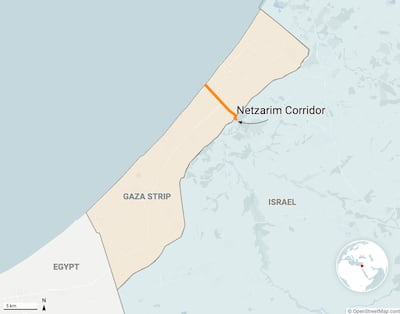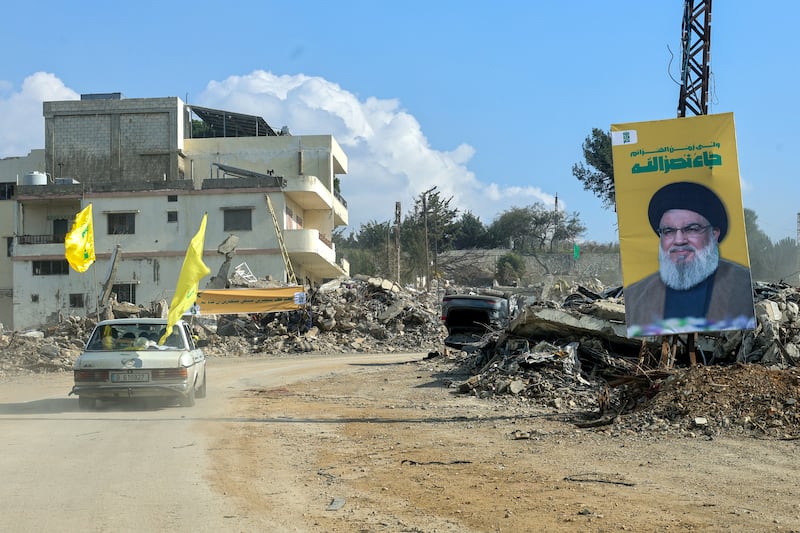On January 19th, the long-awaited ceasefire in the conflict in Gaza came into effect, bringing at least a temporary halt to the violence of the past 15 months, which began with the killing of 2,000 people in Israel and the seizure of more than 250 hostages, according to Israeli tallies, during the Hamas-led attacks of October 7th, 2023.
The deal to which Hamas and the Israeli government have agreed is in three stages. During the first, and current, stage of the ceasefire, which is to last six weeks, Hamas is to release 33 hostages in return for whom Israel is to release about 1,900 Palestinian prisoners.
Israeli forces are to leave populated areas of Gaza and Palestinian civilians are to be allowed to return to their neighbourhoods. In addition, hundreds of aid trucks are to enter Gaza each day. Israeli troops will remain in border areas, including the Philadelphi corridor, which runs along the entirety of the border between Gaza and Egypt.
However, they will leave the Netzarim corridor, a strip of land controlled by the Israel Defense Forces, which currently prevents free movement between the north and south of Gaza.
READ MORE

Sixteen days after the beginning of the first stage, by February 4th, negotiations are to begin on the second stage, during which, it is envisaged, a permanent ceasefire will be established, the remaining living hostages will be released in exchange for more Palestinian prisoners and a complete withdrawal of Israeli forces from Gaza. The final stage will see the return of the bodies of dead hostages and the initiation of efforts to reconstruct Gaza.
The war in Gaza has utterly transformed the landscape of Palestine, both figuratively and literally. The human cost has been beyond anything that might have been anticipated in the immediate aftermath of the initial attacks on southern Israel.
At least 46,600 Palestinians have been killed and at least another 100,000 injured, according to the Hamas-run Gaza health ministry, although some projections put the total at much higher. The territory of Gaza has been devastated, its water and sanitation system has collapsed, 80 per cent of its health facilities have been destroyed and, according to the UN, nearly 70 per cent of all structures have been damaged or destroyed.
While the situation in Gaza has, understandably, commanded most attention, the West Bank has not escaped the impact of the war. A significant escalation of violence over the course of 2024 has led to the killing of at least 870 Palestinians at the hands of Israeli settlers and the IDF, while another 6,700 have been wounded.
According to the UN Office for the Co-ordination of Humanitarian Affairs, from October 7th, 2023, to the end of 2024, there were at least 1,860 incidents of settler violence in the West Bank, an average of four per day. In addition, over the course of the past year, Israel has confiscated more land in the West Bank than in the previous 20 years combined, according to the Israeli Peace Now movement.
[ Joyful but anxious, Gazans crowd the road northOpens in new window ]
One of Donald Trump’s first acts as US president was to lift sanctions on Israeli far-right organisations and individuals involved in attacks on Palestinians that had been introduced by Joe Biden in February of last year. There are concerns now that Trump has offered Israeli prime minister Binyamin Netanyahu an effective free hand in the West Bank in return for agreeing to the current ceasefire.
The war in Gaza has, of course, had dramatic impacts elsewhere in the region. The most immediate have been felt in Israel’s neighbour to the north. On October 8th, the day after the Hamas attacks on southern Israel, Hizbullah commenced a series of rocket and artillery attacks on Israel.
The decision of the Hizbullah leadership fitted with the broader strategy of its Iranian sponsor of the “unity of the arenas”. This proposed that any element of the so-called “Axis of Resistance”, comprising an informal alliance of state and non-state actors committed to opposing US and Israeli influence in the region, would come to the assistance of the others if they were to come under attack by Israel.
However, the result was to prove devastating for Hizbullah and for Iran. After a year of low-level conflict, Israel launched a series of assaults on Hizbullah, killing its leader, Hassan Nasrallah, and his likely successor and injuring thousands of its combatants. On October 1st, Israel launched a ground invasion of southern Lebanon, which dismantled much of Hizbullah’s military capacity and missile stockpile.
The invasion also led to the deaths of some 3,800 Lebanese and the displacement of another one million people. The conflict came to an end when Hizbullah agreed to a ceasefire under the terms of which it was to withdraw its forces from the area between the border with Israel and the Litani river 20 miles to the north.

However, the conflict had impacts beyond this, leaving Hizbullah a weakened actor within Lebanon. Although it still has significant military capacity, it is unlikely to pose a real threat to Israel for years to come. It may also be forced into a new relationship with the Lebanese state, not least because its support will be essential to secure the vast sums of money that will be necessary to rebuild Shia areas in which Hizbullah’s support is concentrated.
[ ‘If Unrwa goes down, the whole aid structure goes down’Opens in new window ]
After two years of stasis, Lebanon finally has a new prime minister and a new president committed, ostensibly at least, to political and economic reform. In this setting and given the terms of the ceasefire agreement with Israel, which envisages an enhanced role for the Lebanese army in the south, Hizbullah may face renewed calls to disarm.
Unlikely as this outcome might be, it is difficult to see the movement regaining the level of power and influence that it enjoyed before October 2023 any time soon.
Even more unexpected change arising from the conflict in Gaza was witnessed in Syria in December when opposition forces led by the Islamist Hayat Tahrir al-Sham launched an offensive against the Assad regime that surprised almost all observers in forcing a change of regime in a matter of days.
The fall of Assad, once a key ally of Iran and a central element of the Axis of Resistance stemmed from several factors, not least his stance in response to the conflict in Gaza. This was significantly at variance with broader Iranian strategy.
While Hizbullah and the Yemeni Houthi movement escalated their involvement in the conflict with Israel, Assad’s Syria remained conspicuously absent. This was in keeping with Assad’s priority to present himself as a force for stability as he courted the support of the Gulf States, which were increasingly developing a more pragmatic relationship with Damascus after years of mutual hostility.
Assad’s intent to distance himself from Tehran became clear when he expelled the Houthis from the Yemeni embassy in Damascus just one day after the war in Gaza began. Days later he handed control of the embassy to the Saudi-backed government in Yemen. In addition, there were widespread suspicions in Iran of Syrian complicity in Israeli strikes on Iranian assets in Syria.
Thus, when the Assad regime came under direct attack in December of last year, there was no willingness on the part of Iran to come to his rescue.
The culmination of events in Gaza, Lebanon and Syria has been significantly to damage the position of Iran in the region. In the immediate sense, key allies in Hamas and Hizbullah have been severely weakened while regime change in Syria has brought Sunni Islamists to power who have no particular affinity with Iran.
Iran’s supreme leader, Ayatollah Ali Khamenei, insists that the Axis of Resistance has not collapsed, asserting that it takes the form of faith and commitment that grows stronger under pressure and will ultimately succeed in expelling the US from the region. But, undoubtedly, Iran and its allies cannot play the same role in the region as they have done in the recent past.
Iran has also suffered direct attack from Israel, which has deepened the regime’s vulnerability. Israeli escalation of its conflict with Iran in April and October of last year and the limited nature of Iranian responses demonstrated Israel’s military and intelligence superiority, as well as flaws in Iranian air defences.
The limitations of its conventional forces and the weakening of its allies in the region has led its leaders to turn once more to the option of weaponising its nuclear programme. While the newly elected president of Iran, Masoud Pezeshkian, came to office on a promise to prioritise sanctions relief, the return of Trump to the White House may lead to even more stringent sanctions on Iran increasing pressure on the regime in Tehran.
The current ceasefire has allowed some respite to Palestinians after 15 months of violence. However, even if the ceasefire holds, the ramifications of the conflict in Gaza for the region will be felt for years to come.
Dr Vincent Durac lectures in Middle East politics in the UCD school of politics and international relations
- Sign up for push alerts and have the best news, analysis and comment delivered directly to your phone
- Find The Irish Times on WhatsApp and stay up to date
- Our In The News podcast is now published daily – Find the latest episode here



















